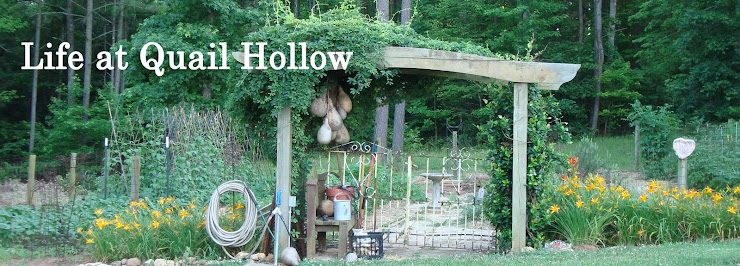
Ciabatta is an Italian bread and according to many Internet sites, it can be made at home, but only experienced bakers should attempt it with the aid of a good bread book. Tonight I proved that statement partially wrong. I am not an experienced baker, but I made 2 loaves of this crusty bread with the aid of my new favorite cookbook,
Kneadlessly Simple by Nancy Baggett.
I had my doubts, could I really make ciabatta with less effort than it takes to get in the car and drive to Panera for a loaf? Well, once again, Nancy has made me a believer. This was so simple. Last night I mixed the dough, refrigerated it for 3 hours and let it sit on the counter overnight. This morning, I stirred the dough and let it rest. Shaping the dough was easy and the second rise took about 2 hours. The loaves are baked at a high temperature over a pan of water. Forty minutes later, the loaves were golden brown. After 10 minutes of cooling, Kenny and I had dinner, ciabatta with some of the olive oil we purchased in Cortona and parmesan. What a meal!
Ciabatta
adapted from Kneadlessly Simple
3 cups (15 ounces) King Arthur all-purpose flour
1 1/2 teaspoons table salt
3/4 teaspoons Fleishmann's RapidRise yeast
1 1/2 cups ice water
1 tablespoon olive oil and more for coating the dough
In a large bowl stir together the dry ingredients. Add the water and stir to combine. Add the olive oil and stir. Coat the top lightly with olive oil. Cover with plastic wrap and refrigerate for 3 to 10 hours. Remove from the frig and let rise at room temperature for 12 to 15 hours.
Spray 2 9x12-inch sheets of parchment paper with canola oil and dust with 1/4 cup flour. Line a flat baking sheet (or the back of a rimmed sheet) with parchment paper and dust with flour.
Using a oiled spatula, loosen the dough gently from the bowl. With a oiled knife, cut the dough in half, being careful not to deflate the dough. Place each portion on the sheets of parchment paper and dust with flour. With well-oiled fingertips, gently shape the dough into a 9x6-inch rectangle. Push in the sides of the middle for a "slipper" shape. With a floured, wide spatula, move the loaves to the parchment covered baking sheets, inverting them. Reshape and press deep indentations into the dough with flour-dusted fingertips. Leave the excess flour on the loaves for a rustic look. Let rise 2 hours or until doubled.
Place a shallow pan in the bottom of the oven and preheat to 500 degrees F. Pour one cup of ice water in the pan and bake the loaves on the lowest rack for 30 - 35 minutes. The loaves should be golden brown and the internal temperature is 208 to 210 degrees. Let cool on a wire rack for 10 minutes.
Now for some tips.
- For ease and accuracy, weigh the flour. This is much easier and cuts down on the cleanup of scattered flour and measuring cups.
- For the ice water, add ice cubes to the water and stir for 30 seconds.
- After 20 minutes of baking, insert a digital thermometer into the center of a loaf. I have one that has a probe for the food and the monitor sits outside the oven.
- Buy a copy of Kneadlessly Simple! It is the textbook for delicious bread with little effort and great results.







 March Cooking with Friends Menu
March Cooking with Friends Menu





 Since I was in a hurry to finish the bread, I used Nancy's tip for the second rising and placed the dough in the microwave with a cup of boiling water for an hour. I heated the 4 1/2 quart LeCreuset Dutch oven, plopped the dough in the pot and baked it. The smell during the baking was incredible. And the bread was wonderful, crusty on the outside and tender on the inside. Nancy knows what she is doing when it comes to no-knead bread. The book includes a variety of recipes and is a must for every wanna-be baker.
Since I was in a hurry to finish the bread, I used Nancy's tip for the second rising and placed the dough in the microwave with a cup of boiling water for an hour. I heated the 4 1/2 quart LeCreuset Dutch oven, plopped the dough in the pot and baked it. The smell during the baking was incredible. And the bread was wonderful, crusty on the outside and tender on the inside. Nancy knows what she is doing when it comes to no-knead bread. The book includes a variety of recipes and is a must for every wanna-be baker.













